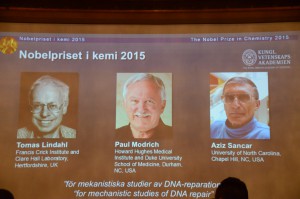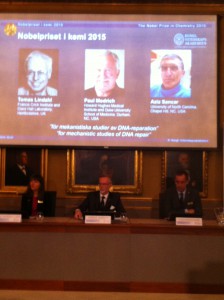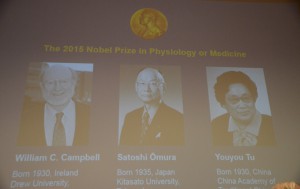“Each day our DNA is damaged by UV radiation, free radicals and other carcinogenic substances, but even without such external attacks, a DNA molecule is inherently unstable. Thousands of spontaneous changes to a cell’s genome occur on a daily basis. Furthermore, defects can also arise when DNA is copied during cell division, a process that occurs several million times every day in the human body.”
The reason our genetic material does not disintegrate into complete chemical chaos is that a host of molecular systems continuously monitor and repair DNA.
The Nobel Prize in Chemistry 2015 awards three pioneering scientists who have mapped how several of these repair systems function at a detailed molecular level.
In the early 1970s, Tomas Lindahl demonstrated that DNA decays at a rate that ought to have made the development of life on Earth impossible. This insight led him to discover a molecular machinery, base excision repair, which constantly counteracts the collapse of our DNA.
Aziz Sancar has mapped nucleotide excision repair, the mechanism that cells use to repair UV damage to DNA. People born with defects in this repair system will develop skin cancer if they are exposed to sunlight. The cell also utilises nucleotide excision repair to correct defects caused by mutagenic substances, among other things.
Paul Modrich has demonstrated how the cell corrects errors that occur when DNA is replicated during cell division. This mechanism, mismatch repair, reduces the error frequency during DNA replication by about a thousandfold. Congenital defects in mismatch repair are known, for example, to cause a hereditary variant of colon cancer.
The Nobel Laureates in Chemistry 2015 have provided fundamental insights into how cells function, knowledge that can be used, for instance, in the development of new cancer treatments.
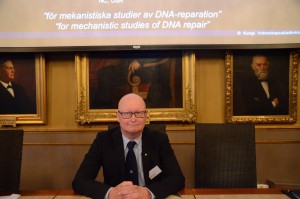 Being interviewed by Green Post, Torleif Härd Professor in Structural Biology said the discovery is very important in helping us understand how cells work and it can be very helpful for finding new methods in anti-aging and cancer.
Being interviewed by Green Post, Torleif Härd Professor in Structural Biology said the discovery is very important in helping us understand how cells work and it can be very helpful for finding new methods in anti-aging and cancer.
He said this can be seen as another tool for the human body to protect itself.
Tomas Lindahl, Swedish citizen. Born 1938 in Stockholm, Sweden. Ph.D. 1967 from Karolinska Institutet, Stockholm, Sweden. Professor of Medical and Physiological Chemistry at University of Gothenburg 1978–82. Emeritus group leader at Francis Crick Institute and Emeritus director of Cancer Research UK at Clare Hall Laboratory, Hertfordshire, UK.
Paul Modrich, U.S. citizen. Born 1946. Ph.D. 1973 from Stanford University, Stanford, CA, USA. Investigator at Howard Hughes Medical Institute and James B. Duke Professor of Biochemistry at Duke University School of Medicine, Durham, NC, USA.
Aziz Sancar, U.S. and Turkish citizen. Born 1946 in Savur, Turkey. Ph.D. 1977 from University of Texas, Dallas, TX, USA. Sarah Graham Kenan Professor of Biochemistry and Biophysics, University of North Carolina school of Medicine.
Tomas Lindahl said he was surprized and feel lucky and privileged in answering Green Post question.
In interview with Nobel Media Adam Smith, he said he was surprised to some extent.
“… not 100% surprise because Im getting up in the years and I know that I have been one of the well known scientists in my field of science, which is DNA repair for many years. So the question was will there be a Prize for DNA repair, and I think many people have now realised its a very important topic of research, and if so there would be 10, 15 excellent people you could choose from, and you cant give the Nobel Prize to more than three people. So I feel very lucky and privileged to be included in the top class that was awarded.”
He was at home when he learned the news.
The American Modrich said he was in his countryside cabin when he received emails from outside.
He said he felt shocked, but happy to hear the news.
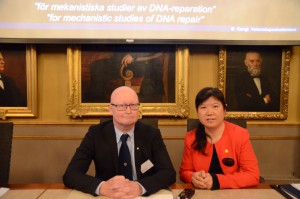 瑞典皇家科学院院士,结构生物学教授哈德在接受绿色邮报记者采访时说,这三位科学家的发现为人们了解细胞提供了基本洞见,对抗衰老和防癌新方式都有好处。
瑞典皇家科学院院士,结构生物学教授哈德在接受绿色邮报记者采访时说,这三位科学家的发现为人们了解细胞提供了基本洞见,对抗衰老和防癌新方式都有好处。
